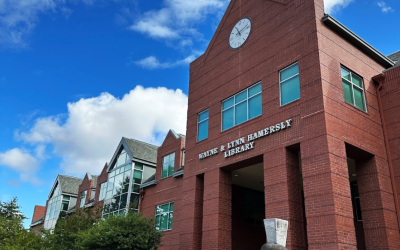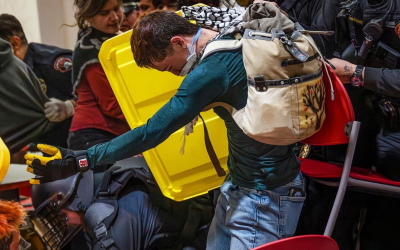Written by: Sadie Latimer | News Editor Every residence hall at Western has a student government. Hall governments are a place for students to go if they want to voice any concerns, ideas or opinions about their hall. Not only that, but in past years, members of hall...
News
Chief’s kicker under fire for commencement speech
Written by: Jaylin Hardin | Sports Editor Kicker for the Kansas City Chiefs football team, Harrison Butker, has recently come under fire for a commencement speech he gave May 11, 2024, at Benedictine College in Atchinson, Kansas. Benedictine is a Catholic college and...
Ten years later…
Written by: Gretchen Sims | Editor-In-Chief Hannah Field | News Editor Western has been a key leader among Oregon Public Universities when it comes to sustainability practices. Ackerman Hall, as one example, was not only built to be sustained by solar power —...
ASWOU elections
Written by: Hannah Field | News Editor The Associated Students of Western are expecting to elect President Brenda Rocio Martinez, Vice President Fernando Robles and Judicial Administrator Morgan Pemberton into office for the 2024-2025 academic school year. The trio is...
MMIWCTS Awareness Month
Written by: Lili Minato | Freelancer Content warning: this article contains mentions of murder and violence. May is Missing and Murdered Indigenous Women, Children and Two Spirit Awareness Month. May 5 is National Missing or Murdered Indigenous Persons Awareness Day....
Freedom of expression
Written by: Hannah Field | News Editor Western’s Freedom of Expression event occurred May 10, 2024, where students, faculty and any interested persons gathered to discuss amplifying voices, advocating for important causes and civic engagement. The event was sponsored...
Upcoming events
Written by: Hannah Field | News Editor May 23 — The S’More You Know 6 p.m. at the firepit outside of the Werner University Center Join the Office of Student Conduct in roasting marshmallows and making s’mores outside on campus with a chance to walk away with some...
Drink One for Dane
Written by: Sierra Porter | Staff Writer Every year, Dutch Bros Coffee holds its annual Drink One for Dane in honor of co-founder Dane Boersma, who passed away from Amyotrophic Lateral Sclerosis in 2009. This year, Drink One for Dane took place on Friday, May 17,...
Tuition increase
Written by: Hannah Field | News Editor All seven public, four-year universities in Oregon plan to raise tuition costs from three to five percent for the 2024-2025 academic school year. Oregon State University’s in-state and full-time students will be expected to pay...
Students protest on college campus
Written by: Libby Thoma | Staff Writer Content warning: this article contains mentions of police violence. Pro-Palestine protests have been taking place all over U.S. college campuses. According to NPR, students are asking for campuses not to support businesses that...



